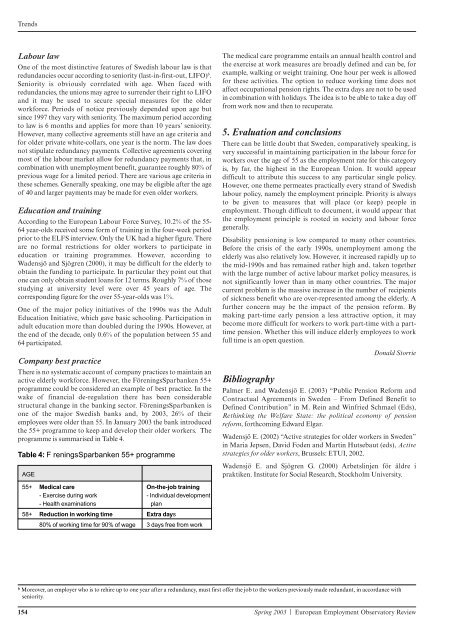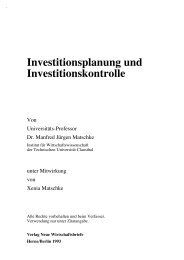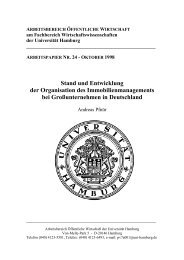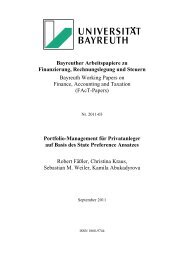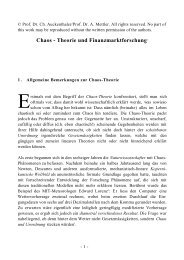FRANCE The
FRANCE The
FRANCE The
Create successful ePaper yourself
Turn your PDF publications into a flip-book with our unique Google optimized e-Paper software.
Trends<br />
Labour law<br />
One of the most distinctive features of Swedish labour law is that<br />
redundancies occur according to seniority (last-in-first-out, LIFO) 6 .<br />
Seniority is obviously correlated with age. When faced with<br />
redundancies, the unions may agree to surrender their right to LIFO<br />
and it may be used to secure special measures for the older<br />
workforce. Periods of notice previously depended upon age but<br />
since 1997 they vary with seniority. <strong>The</strong> maximum period according<br />
to law is 6 months and applies for more than 10 years’ seniority.<br />
However, many collective agreements still have an age criteria and<br />
for older private white-collars, one year is the norm. <strong>The</strong> law does<br />
not stipulate redundancy payments. Collective agreements covering<br />
most of the labour market allow for redundancy payments that, in<br />
combination with unemployment benefit, guarantee roughly 80% of<br />
previous wage for a limited period. <strong>The</strong>re are various age criteria in<br />
these schemes. Generally speaking, one may be eligible after the age<br />
of 40 and larger payments may be made for even older workers.<br />
Education and training<br />
According to the European Labour Force Survey, 10.2% of the 55-<br />
64 year-olds received some form of training in the four-week period<br />
prior to the ELFS interview. Only the UK had a higher figure. <strong>The</strong>re<br />
are no formal restrictions for older workers to participate in<br />
education or training programmes. However, according to<br />
Wadensjö and Sjögren (2000), it may be difficult for the elderly to<br />
obtain the funding to participate. In particular they point out that<br />
one can only obtain student loans for 12 terms. Roughly 7% of those<br />
studying at university level were over 45 years of age. <strong>The</strong><br />
corresponding figure for the over 55-year-olds was 1%.<br />
One of the major policy initiatives of the 1990s was the Adult<br />
Education Initiative, which gave basic schooling. Participation in<br />
adult education more than doubled during the 1990s. However, at<br />
the end of the decade, only 0.6% of the population between 55 and<br />
64 participated.<br />
Company best practice<br />
<strong>The</strong>re is no systematic account of company practices to maintain an<br />
active elderly workforce. However, the FöreningsSparbanken 55+<br />
programme could be considered an example of best practice. In the<br />
wake of financial de-regulation there has been considerable<br />
structural change in the banking sector. FöreningsSparbanken is<br />
one of the major Swedish banks and, by 2003, 26% of their<br />
employees were older than 55. In January 2003 the bank introduced<br />
the 55+ programme to keep and develop their older workers. <strong>The</strong><br />
programme is summarised in Table 4.<br />
Table 4: F reningsSparbanken 55+ programme<br />
AGE<br />
55+ Medical care On-the-job training<br />
- Exercise during work - Individual development<br />
- Health examinations plan<br />
58+ Reduction in working time Extra days<br />
80% of working time for 90% of wage 3 days free from work<br />
<strong>The</strong> medical care programme entails an annual health control and<br />
the exercise at work measures are broadly defined and can be, for<br />
example, walking or weight training. One hour per week is allowed<br />
for these activities. <strong>The</strong> option to reduce working time does not<br />
affect occupational pension rights. <strong>The</strong> extra days are not to be used<br />
in combination with holidays. <strong>The</strong> idea is to be able to take a day off<br />
from work now and then to recuperate.<br />
5. Evaluation and conclusions<br />
<strong>The</strong>re can be little doubt that Sweden, comparatively speaking, is<br />
very successful in maintaining participation in the labour force for<br />
workers over the age of 55 as the employment rate for this category<br />
is, by far, the highest in the European Union. It would appear<br />
difficult to attribute this success to any particular single policy.<br />
However, one theme permeates practically every strand of Swedish<br />
labour policy, namely the employment principle. Priority is always<br />
to be given to measures that will place (or keep) people in<br />
employment. Though difficult to document, it would appear that<br />
the employment principle is rooted in society and labour force<br />
generally.<br />
Disability pensioning is low compared to many other countries.<br />
Before the crisis of the early 1990s, unemployment among the<br />
elderly was also relatively low. However, it increased rapidly up to<br />
the mid-1990s and has remained rather high and, taken together<br />
with the large number of active labour market policy measures, is<br />
not significantly lower than in many other countries. <strong>The</strong> major<br />
current problem is the massive increase in the number of recipients<br />
of sickness benefit who are over-represented among the elderly. A<br />
further concern may be the impact of the pension reform. By<br />
making part-time early pension a less attractive option, it may<br />
become more difficult for workers to work part-time with a parttime<br />
pension. Whether this will induce elderly employees to work<br />
full time is an open question.<br />
Donald Storrie<br />
Bibliography<br />
Palmer E. and Wadensjö E. (2003) “Public Pension Reform and<br />
Contractual Agreements in Sweden – From Defined Benefit to<br />
Defined Contribution” in M. Rein and Winfried Schmael (Eds),<br />
Rethinking the Welfare State: the political economy of pension<br />
reform,forthcoming Edward Elgar.<br />
Wadensjö E. (2002) “Active strategies for older workers in Sweden”<br />
in Maria Jepsen, David Foden and Martin Hutsebaut (eds), Active<br />
strategies for older workers, Brussels: ETUI, 2002.<br />
Wadensjö E. and Sjögren G. (2000) Arbetslinjen för äldre i<br />
praktiken. Institute for Social Research, Stockholm University.<br />
6 Moreover, an employer who is to rehire up to one year after a redundancy, must first offer the job to the workers previously made redundant, in accordance with<br />
seniority.<br />
154 Spring 2003 | European Employment Observatory Review


